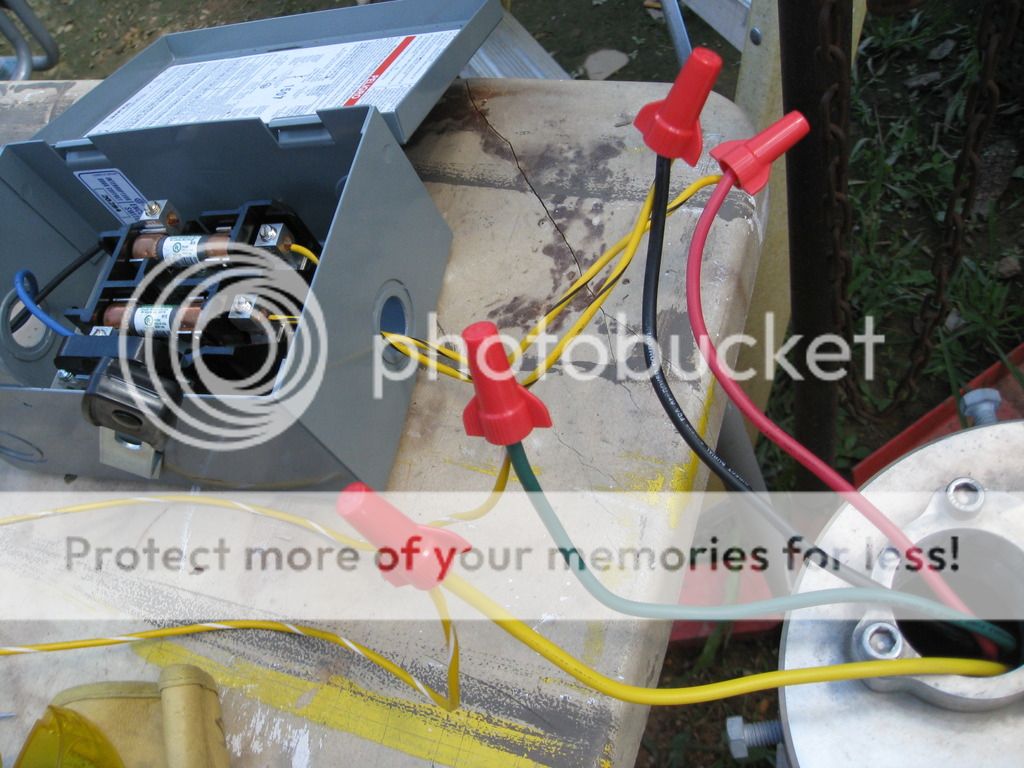SteveMitty79
Member
OK. I followed the wiring diagram below. I know it shows like a 110 box, but it came with the 220v pump. I just substituted the neutral for a hot so I had two power legs to the pump, one breaking off and supplying the capacitor, the third leg and finally the ground.
I fused both before the pump and the control box the main power.
It bogged down as if drawing amps for about ten seconds and the generator breaker threw. I tested again and while running, I got 127 volts each leg upside of the control box. Past the control box, I got 85 volts each leg to the pump. I wondered where the rest went, so I tried it again and found the capacitor line to the pump reading 95 volts.
No smoke but no go. Any ideas?


I fused both before the pump and the control box the main power.
It bogged down as if drawing amps for about ten seconds and the generator breaker threw. I tested again and while running, I got 127 volts each leg upside of the control box. Past the control box, I got 85 volts each leg to the pump. I wondered where the rest went, so I tried it again and found the capacitor line to the pump reading 95 volts.
No smoke but no go. Any ideas?


Last edited by a moderator:

